Most would agree that enjoying a night at the theatre can help you relax and take your mind off the stresses and struggles of daily life. Studies show that people who had attended a cultural place or event in the previous 12 months were almost 60% more likely to report good health compared to those who had not (Mowlah, et al. 2014). So theatres, art and culture are important for individual wellbeing: but what do they do for communities? In this article, I’ll be taking a deep dive into this very question within the context of my local theatre, The New Vic!
In order to understand more about the theatre’s relationship with the community, I interviewed five people from the New Vic. Firstly, I talked to Theresa Heskins, the artistic director of the theatre. Next, I spoke to Mel Osborne, a local community member and volunteer at the New Vic. I also spoke to Jill Rezzano and Becky Salt from the New Vic’s Education department, and finally to Sue Moffat, the director of community theatre project Borderlines.
Mel summed up her thoughts about local theatre, saying ‘People always think that theatre is about seeing the big West End productions. But I always love seeing the New Vic stuff and I love telling everyone that they should be going as well.’ Mel also talked about how bigger theatres often have unaffordable pricing, which means that people often have to miss out on theatre as a whole but with the New Vic pricing is more affordable, making it more accessible to all local people.
Local theatres, local communities
The New Vic Theatre is situated in Newcastle-under-Lyme, in Staffordshire, England and was Europe’s first purpose-built theatre-in-the-round. It’s a theatre filled with history and reflections of the local pottery and mining industries; much of this is reflected on the stage.
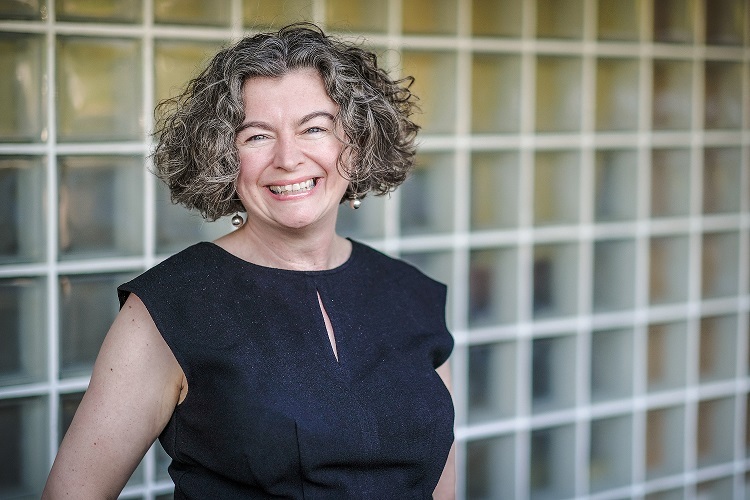 Theresa Heskins, Artistic Director. Credit: Andrew BillingtonDuring the late 1980s and 1990s, Stoke-on-Trent and Newcastle-under-Lyme was hit hard by the general decline in the British manufacturing sector and hundreds of factories and potteries were closed, including the renowned Shelton Bar steelworks. This resulted in a sharp rise in unemployment and the area is now considered to be highly populated by the working class. A hugely disproportionate number of directors, writers and actors come from privileged backgrounds, and as highlighted by Becky from the Education team, this means that working class communities can find it hard to engage with theatre. She said ‘Local theatre is important because what we put on stage is reflective of the community,’ and this idea of reflection, involvement and strong relationship between the New Vic and local people came up in every interview.
Theresa Heskins, Artistic Director. Credit: Andrew BillingtonDuring the late 1980s and 1990s, Stoke-on-Trent and Newcastle-under-Lyme was hit hard by the general decline in the British manufacturing sector and hundreds of factories and potteries were closed, including the renowned Shelton Bar steelworks. This resulted in a sharp rise in unemployment and the area is now considered to be highly populated by the working class. A hugely disproportionate number of directors, writers and actors come from privileged backgrounds, and as highlighted by Becky from the Education team, this means that working class communities can find it hard to engage with theatre. She said ‘Local theatre is important because what we put on stage is reflective of the community,’ and this idea of reflection, involvement and strong relationship between the New Vic and local people came up in every interview.
When talking about the New Vic’s relationship with the community, artistic director Theresa Heskins dived straight into the history of the theatre.
“The local pottery industry is very unique, as the local people could make a living out of their artistic endeavours, and there are few industries like this. Working people usually contribute labour but rarely get to sit in an artist's studio painting for a living.”
In the 1960s, the Victoria Theatre company was founded in a converted cinema in Hartshill and it was only later in the 1980s, that the idea was raised to build a whole new theatre. This required a whole lot of money but local people really fought for the theatre, Theresa said. The locals did fundraising campaigns, agitated with their MPs and also contributed financially.
“One memorable night, a group of miners turned up after their shift at the pit, all covered in pit muck, still in their helmets and overalls. With them, they had a check to contribute to the building of the theatre. I just think that’s amazing! And partly I think that’s because there’s a reciprocity of the community wanting a theatre and the theatre itself.”
Theresa also touched on the Social Documentaries, which were a series of semi-biographical plays created by founding artistic director Peter Cheeseman and his team. Cheeseman would go out and talk to locals, record their words and then make a play out of their stories, pioneering a new form of documentary theatre-making at the Victoria Theatre. He used verbatim theatre techniques to tell stories of real people’s lives and experiences in their own words, and would sometimes include songs and factual information.
The Social Documentaries included titles such as ‘The Knotty’ about the North Staffordshire Railways, and ‘I Don’t Want To Set The World On Fire’, which was about the largely female munitions workers on the home front. The story focussed on the lives of a Stoke-on-Trent family, during WW2 and the life of daughter Lily, a munitions worker. The plays were special in that they had a massive local resonance, and captured the hearts of non-traditional theatre-goers.
More recently, the Christmas shows at the New Vic have become incredibly important to locals. The plays are often adaptations of classic story tales, crafted to fit the local audience and the theatre-in-the-round. The yearly shows are filled with music, and almost always feature themes of magic, friendship and family.
Hundreds of young people from local schools arrive in buses for Christmas-time showings and often, attending these shows are their first experiences of theatre. Theresa talked about the inclusion of the ‘young company’, a selection of young people who are part of the ensemble in every Christmas shows and said that it’s ‘really important that young people see themselves on stage, not just as the protagonist but in a much wider sense’.
For other locals, the show has become tradition and Theresa said that the equivalent of one in 10 local people see the Christmas show, displaying their wide-reaching appeal.
Learning for life through theatre
 Jull Rezzano, Head of New Vic Education. Credit Andrew Billington What the New Vic didn’t have during Peter Cheeseman’s times was the outreach work that is done by the New Vic’s Education and Borderlines departments. Gwenda Hughes, Theresa's predecessor and Cheeseman’s successor. The theatre wanted to reach out in many different ways to the diverse groups that make up the local community.
Jull Rezzano, Head of New Vic Education. Credit Andrew Billington What the New Vic didn’t have during Peter Cheeseman’s times was the outreach work that is done by the New Vic’s Education and Borderlines departments. Gwenda Hughes, Theresa's predecessor and Cheeseman’s successor. The theatre wanted to reach out in many different ways to the diverse groups that make up the local community.
Jill Rezzano, head of the New Vic Education department, started by making a distinction over what the department does. The word ‘education’ normally is associated with ideas around formal and traditional education, like schools, college and university. Meanwhile, the Education department’s work is about giving people, from toddlers to older people, the opportunity to learn through theatre at every stage in their life.
“This may be a long time after they have finished their formal education, so sometimes we wonder whether we should be called the learning department.”
The New Vic evidently believes that theatre has different purposes at different stages in people’s lives. In this way, theatre becomes something more than actors on a stage but about a shared experience within a community to imagine, discover and learn. Jill brought up the Ages and Stages project, which is a continuing collaboration with the nearby Keele University, looking into the impact of theatre on ideas about 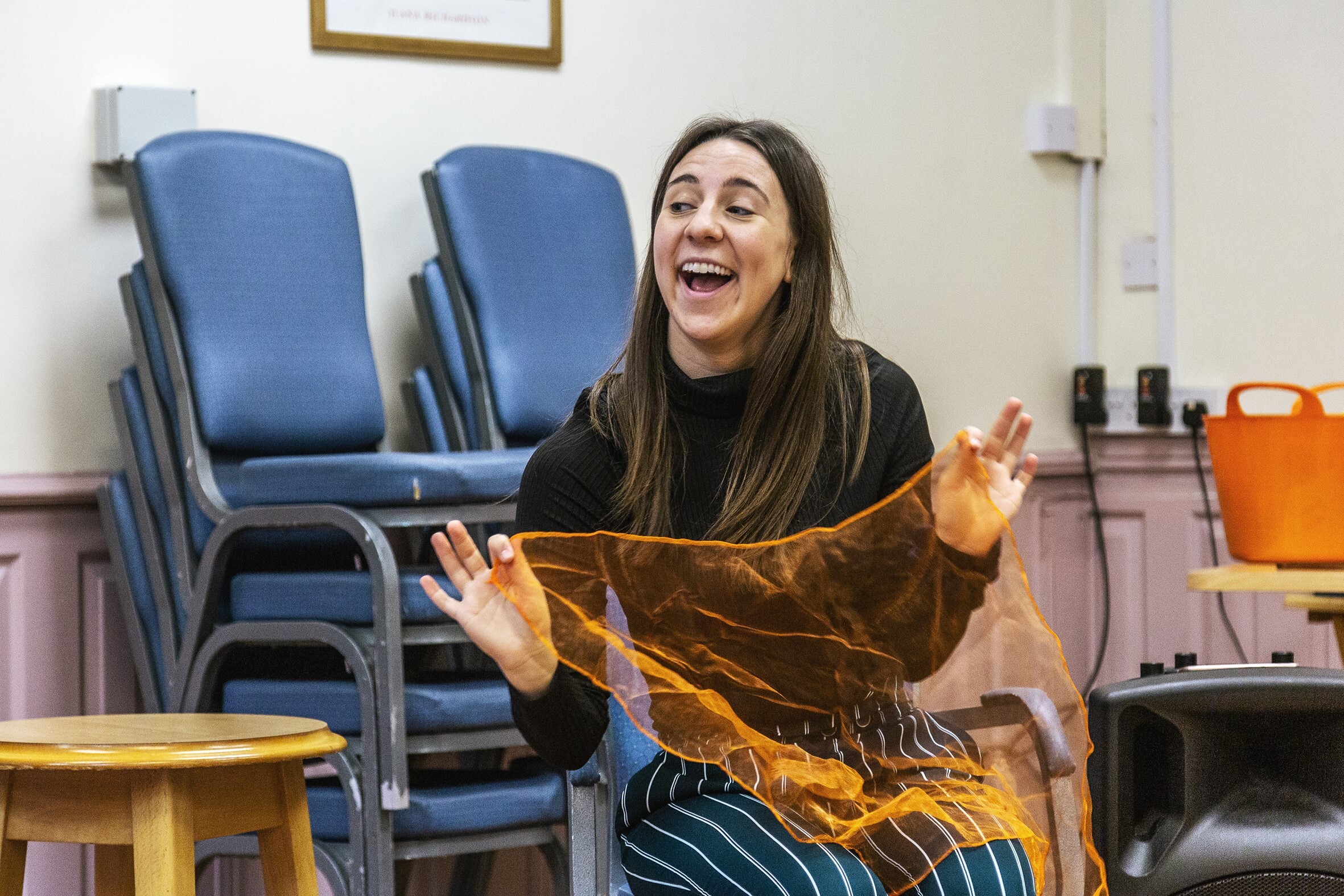 Becky Salt, education practitioner
Becky Salt, education practitioner
Credit Natalie Willattageing and the experience of ageing itself.
The Ages and Stages Theatre Company created a piece of drama called ‘Our Age, Our Stage’ about intergenerational relationships and stereotypes. The piece was formed with interviews with former employees and current and previous theatre-goers, taking inspiration from Cheeseman’s Social Documentaries. The interviewees were asked what their first memories of the theatre were, and what the theatre meant to them. Jill commented that there wasn’t much differentiation between answers of different generations.
“Everyone talked about the excitement, everyone talked about the slight bewilderment when they were first brought in because they weren’t sure what the experience was going to be like.”
The Education team also talked about their yearly ‘Tale Trail’ production, which is tailored for the very youngest of the theatre’s audience. Tale Trail is an immersive storytelling installation for 3 to 5 year olds that’s created by converting a New Vic studio space into a theatrical world – perfect to engage with young children who might not be able to sit and enjoy a play. The trail often features two actors, working in an interactive promenade style, and in 2019, ‘Tale Trail to The Wind In The Willows’ received a nomination at the UK Theatre Awards for Best Show for Children and Young People. 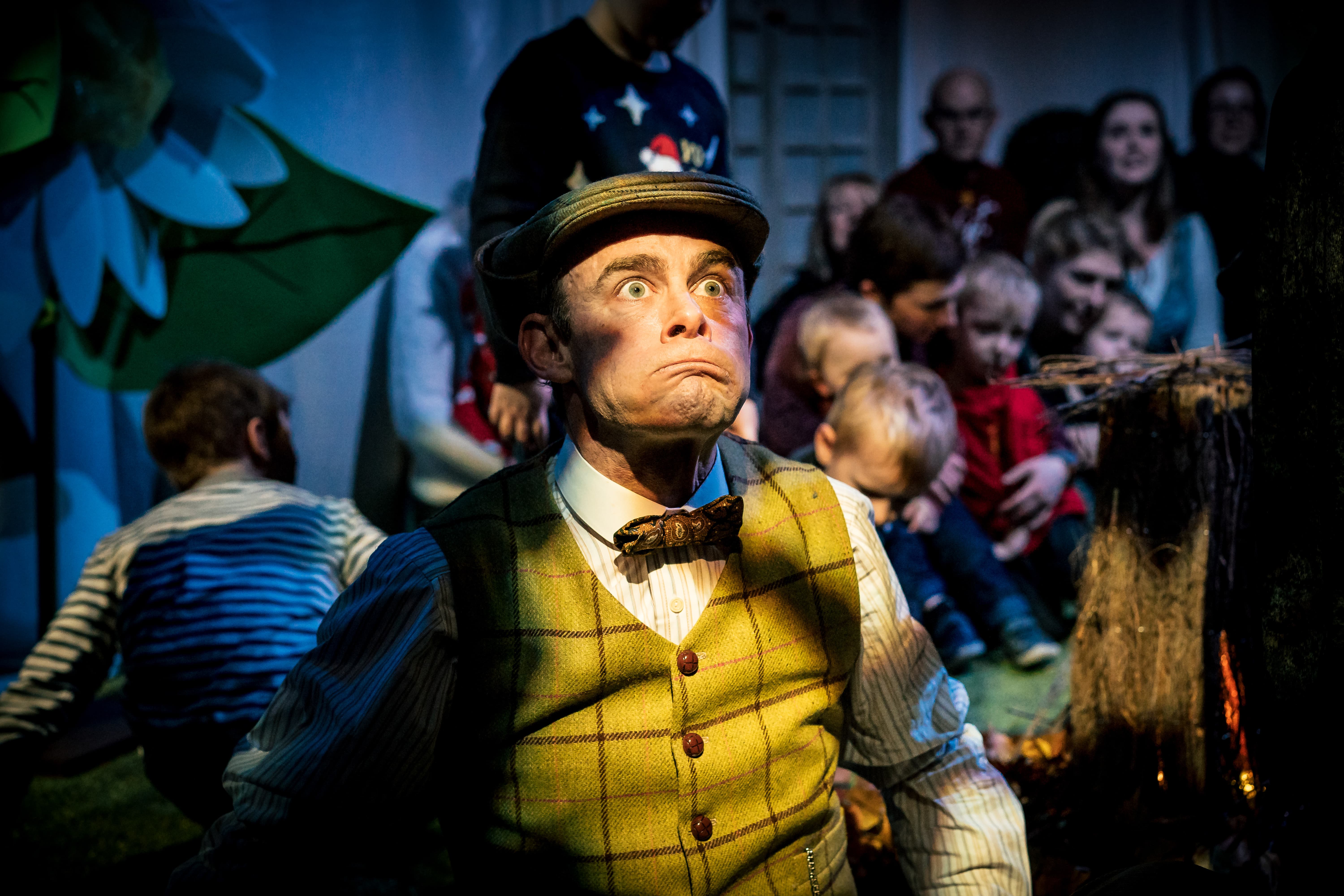 The Wind in the Willows Tale Trail. Credit Andrew Billington
The Wind in the Willows Tale Trail. Credit Andrew Billington
Authentic engagement
And it’s not just the Education department at the New Vic that is reaching out to communities — the Borderlines department is also focused on outreach work.
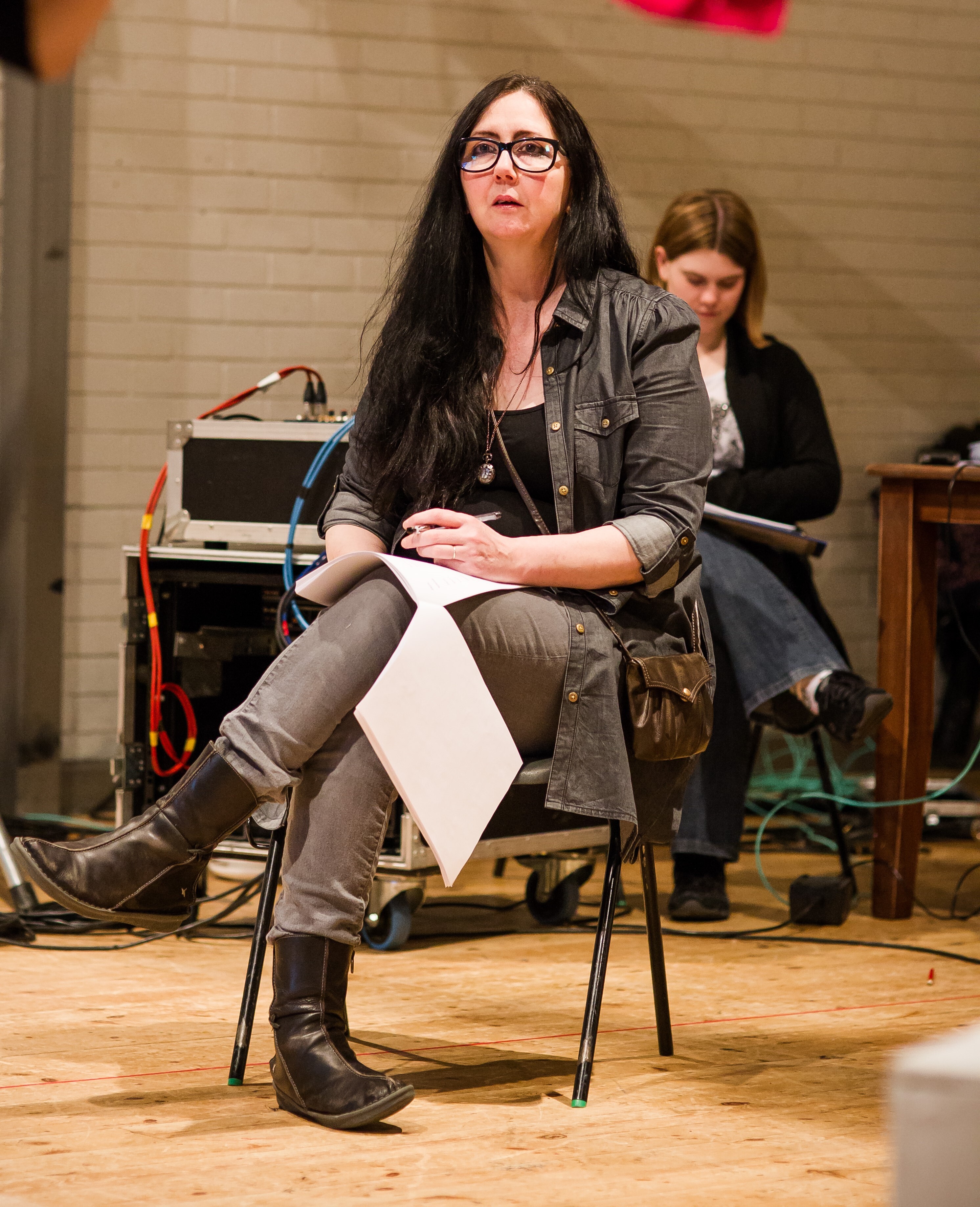 Sue Moffat, Borderlines Director
Sue Moffat, Borderlines Director
Credit Andrew BillingtonSue Moffat, director of Borderlines, explained that their aim was to reach those on the borderlines of society and at risk of exclusion.
“The ethos of the name borderlines was to recognise that a lot of people exist on the margins of society and that they’ve also got their stories to tell. When we’re not engaging with those marginalised groups, we’re missing out on their ideas, their energies and their experiences.”
Borderlines was also created under the direction of Gwenda Hughes. Originally, the project was only meant to last three years and aimed to work with communities in the ex-mining field areas of Stoke and Newcastle. Their three focus areas were young people at risk and in trouble with police, under seven’s (particularly those with single parents), and people with learning disabilities. The project is now over 20 years old, and over the years their work has expanded to not only help marginalised people, but also to delve into the underlying causes for the problems these groups face.
Sue talked about how the Borderlines team don’t often have to sit and think of projects or communities to work with — the communities come to them. As the reputation of their work and projects has spread, Borderlines now is commonly approached by locals, organisations and even the police when their services are required, which has allowed them to become ‘the responsive end of the theatre.’
I asked Sue for an example of the work Borderlines does in the community and she happily obliged. She outlined a piece of work she’d done witha group of Muslim girls from Stoke-on-Trent.
“They had seen a piece about racism that Borderlines had toured around. They got in touch with the theatre, to ask if they could make a piece about what it was like to grow up as a Muslim girl in Stoke-on-Trent. So, we got funding and did workshops with them... In the end, they wanted to do the performance themselves and they used really powerful poetry, voiceovers and physical theatre in their piece. After the performance, they ran workshops in the schools. The piece was called Faces of Evil and it won a Global Ethics award.
She continued, ‘So it just shows when you really engage in a very authentic way with a community then you build trust and address the problems that they themselves identify.’
This is just one example of the various projects Borderlines has been part of, including numerous programmes tackling food poverty, road safety and their most recent project over the Covid-19 pandemic. Borderlines have been doing a ‘Food and Folktales’ project in the community, working against holiday hunger.
“You can’t just survive with food, you need your imaginations and your hearts to be filling up as well. And that's what theatre does.”
These departments have more recently been joined by the Appetite department which aims to increase wider audience engagement in arts and culture. Theresa said that Education, Borderlines and Appetite have been integral in creating a ‘sense of a very vibrant and reciprocal relationship between the theatre and the community.’
The future?
The future is looking uncertain for the wider art industry – especially theatre – and Theresa agreed, but finished by saying that it was amazing to see ‘how many people wept at being reunited with their local theatre’ She felt that this was a big affirmation that people want and need the theatre, to continue to tell their stories, challenge views, and entertain people. Jill wanted to confirm that she believes theatres are especially important to politically healthy societies. Mel Osborne
Mel Osborne
Community member
“What we do is a political act— we bring people together to hear stories and think about society.”
I would agree: stories are incredibly important to counter existing narratives and create tolerance and acceptance within communities. Mel, community member, was also optimistic.
“It isn’t always just about theatre being in the theatre, but also taking the theatre to people.”
Through the pandemic, the theatre has been using new methods of taking theatre to the people, whether through online sessions, socially-distance shows or streaming theatre. As the second national lockdown starts, The New Vic Theatre has decided to make their play ‘Hoard: Rediscovered’, a dramatic celebration of the mysteries of the Staffordshire Hoard, available to watch online from Wednesday 18 November – Tuesday 1 December.
Maybe this is what theatre will look like for the foreseeable future, but it is clear that the New Vic will continue its work to change lives by improving wellbeing and making people proud of the area they live in. Their relationship with local people –past and present – is an incredible testament to the power of theatre. I believe we should all look to the New Vic as an example of the amazing things community and theatre can do.
You can find the New Vic on Instagram @new_vic_theatre and on Twitter @newvictheatre.
Listen to the interviews!
Sadhana has also produced a podcast that offers additional insight into the history of the theatre, using audio from the interviews. The podcast contains content not written above, so you'll definitely want to give it a listen!






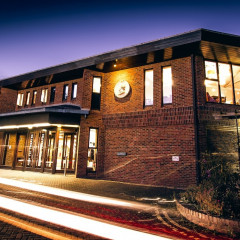


Really insightful piece! It's great to see how local theatres are supporting their communities through such uncertain times.